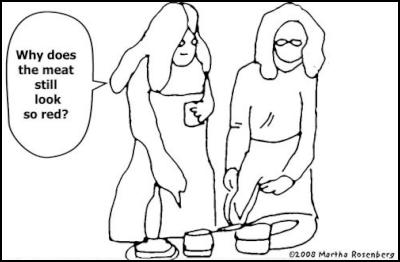Is Your Food Artificially Dyed?
Is Your Food Artificially Dyed?
by Martha Rosenberg
July 6, 2013

Many people know--or suspect--that farmed salmon is not naturally pink. They are right. Farmed salmon are dyed with the chemicals astaxanthin and canthaxanthin to produce an appealing, though unnatural, pink. In the wild, it is the crustaceans and algae that salmon eat that makes them pink; on the farm they would turn gray. Salmon farm operators can even choose the exact color they want.
Are the dyes safe? Canthaxanthin at high dosages has been linked in humans to retinal damage, partial loss of vision and a serious blood disorder called aplastic anemia.
Another method to keep food looking fresh and colorful is curing it with nitrites and nitrates. Bacon, Slim Jims, most processed meat and canned hams are made with the chemicals which give it color, flavor, a long shelf life and protection against bacterial growth. Are the chemicals safe? According to the American Cancer Society nitrite and nitrate have strong links to cancer. Eating just one hot dog a day increased the risk of developing colorectal cancer by as much as 21 percent in a 2008 report from the American Institute for Cancer Research and the World Cancer Research Fund. Nitrite and nitrate become nitrosamines in the body which are linked to colorectal cancer, lung cancer, kidney cancer, stroke, coronary heart disease and diabetes mellitus. Hot dogs are the official favorite food during the US Independence Day celebration held on the Fourth of July.
Coloration is also important to the poultry industry and the FDA permits chicken and turkey to be given feed that has arsenic in it. Yes, arsenic. The metal is allowed in poultry food for feed efficiency, weight gain, to control parasites and for the color it imparts. In 2011, the FDA announced that it found higher levels of arsenic in the livers of chickens treated with arsenic-laced feed and Pfizer, the drug company which also makes many animal drugs, withdrew the product. The problem is--other commercial poultry feed with arsenic in it is still sold and presumably in commercial poultry eaten.
Still, the poster child for artificially colored food is probably red meat which is treated with gasses to keep it looking red. Treating meat with carbon monoxide keeps its oxymyoglobin, what makes it red, from turning brown or gray. In defending the use of gasses to keep meat looking fresh, the meat industry says that meat turning brown is no different than apples turning brown when exposed to the air--a harmless discoloration that does not affect wholesomeness. But the Department of Agriculture's Food Safety and Inspection Service and the European Commission's Scientific Committee on Food have voiced concerns about meat food appearing fresher than it is because of the artificially hues.
As always, US food consumers should have a dose of cynicism since most chemical additives are not on the label.
Find out more about underreported food risks in Martha Rosenberg's new food and drug exposé Born with a Junk Food Deficiency (Prometheus Books, 2012).


 Gordon Campbell: On Why The US Stands To Lose The Tariff Wars
Gordon Campbell: On Why The US Stands To Lose The Tariff Wars Eugene Doyle: Before It’s Too Late - Reimagine New Zealand’s Military Future
Eugene Doyle: Before It’s Too Late - Reimagine New Zealand’s Military Future  Binoy Kampmark: Gender Stunts In Space - Blue Origin’s Female Celebrity Envoys
Binoy Kampmark: Gender Stunts In Space - Blue Origin’s Female Celebrity Envoys Richard S. Ehrlich: A Deadly Earthquake & Chinese Construction
Richard S. Ehrlich: A Deadly Earthquake & Chinese Construction Ian Powell: It Does Matter To Patients Whether They Are Operated In A Public Or Private Hospital
Ian Powell: It Does Matter To Patients Whether They Are Operated In A Public Or Private Hospital Gordon Campbell: On Marketing The Military Threat Posed By China
Gordon Campbell: On Marketing The Military Threat Posed By China